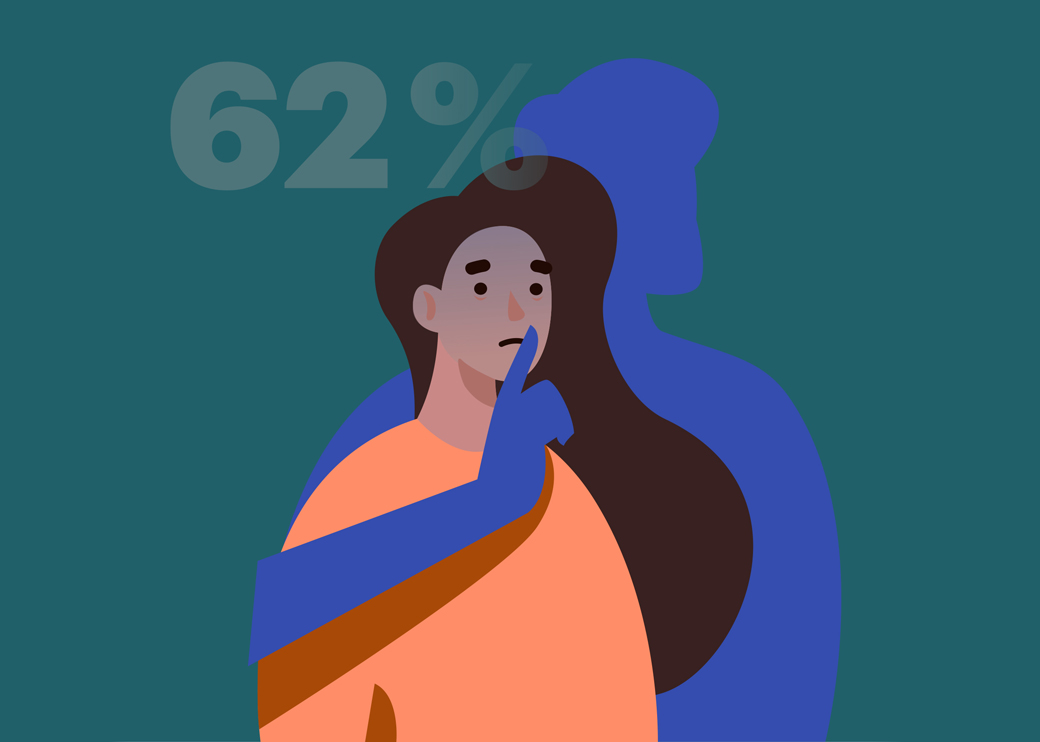
Gendered violence rampant in the world of academia
As many as 62 percent of university and research centre employees and students in fifteen European countries have experienced violence based on their gender.
Text anne ignatius images ISTOCK, Ulla-Carin Ekblom ja Pavel Koubek translation marko saajanaho
The fact the world of academia is full of gendered violence was not exactly news to anyone. The subject has been studied before, albeit from more limited perspectives.

Regardless, the outcome of a recent graduate study was a shock for Professor Liisa Husu and Associate Professor Sofia Strid. 62 percent of university, higher education institution, and research centre students and employees have experienced gendered violence in their job or studies.
Örebro University employee Husu and University of Gothenburg employee Strid participated in the EU-funded, three-year UniSAFE project, which concluded in January 2024. UniSAFE studied the occurrence, prevention, and consequences of gendered violence in fifteen European universities and research centres. In addition, the project examined the national policy and legislation pertaining to gendered violence in all EU countries, four EU candidate countries, the United States, and Canada

The project consisted of an extensive survey, qualitative interviews, workshops, and seminars. These were used as the basis for a set of recommendations meant to prevent gendered violence.
The survey received 42,000 responses. The qualitative case studies were performed in sixteen universities and research centres, including those in Finland.
72 percent of disabled people experience violence
The study defined violence as any physical, mental, sexual, and financial violence, meaning e.g., denigration and discrimination in all its forms were included.
Gendered violence was examined from an intersectional point of view. Thus, the researchers were also interested in how, for example, ethnicity, sexual orientation, or disability might affect the occurrence or experience of violence. The results indicate violence is encountered especially frequently by different types of marginalised people.
For example, 69 percent of respondents belonging to ethnic minorities and 72 percent of respondents who disclosed a disability or chronic illness had experienced violence.
Equality does not reduce occurrence of violence
The presupposition was that people in relatively equal countries, such as the Nordic countries, would have experienced less violence than their peers in countries lagging behind in terms of equality. However, this was not the case.
“It seems working or studying in a more equal environment has no effect on the occurrence of violence”, Strid says.
Strid believes Nordic academic institutions frequently report violence in part because speaking about it is more acceptable than in other countries.
Major flaws also identified in Finland
Liisa Husu is one of the researchers who conducted qualitative case studies in Finland. Husu tells us the Finnish results are not significantly different from those of other countries.
“It is interesting because in Finland, preventing gendered violence has been on the university agenda since the mid-1990s, and intervention guidelines have been in development for a long time. Many other European countries have realised the problem considerably later.”
”The intention of the study was not to compare countries with each other but to study how preventing and addressing sexual violence function in practice.”
Liisa Husu, Professor, University of Örebro
Husu cannot tell us where the case studies regarding Finland were performed. The universities and research centres participating in the case studies were purposely kept anonymous.
“The intention of the study was not to compare countries with each other but to study how preventing and addressing sexual violence function in practice.”
Violence is also systematic. According to the study, it seems those who use violence do not change their behaviour even if attempts are made to intervene. Violence can go on for years and occurs in every country, on every level.
A professor may behave unscrupulously to a subordinate, a research director to a post doc researcher, a lecturer to a student.
“They are either ignorant or unwilling to react, because their behaviour usually continues. If they go work somewhere else, they continue their violent behaviour there”, Strid says.
The UniSAFE website contains information on what victims of violence can do and how to address violence. UniSAFE provides tools for students, post doc researchers, teachers, and university management. Read more at: unisafe-gbv.eu.
Tips and help for victims of violence
Those who experience violence rarely speak about their experiences. They do not trust that speaking up would change anything. On the other hand, violence is not always easy to identify. For example, sexual harassment is so common that many have become used to it.
“If someone’s behaviour feels uncomfortable, it might not be right.”
The research continues. A project that began in March 2024 observes how the academic world addresses the problems identified by the UniSAFE project.

